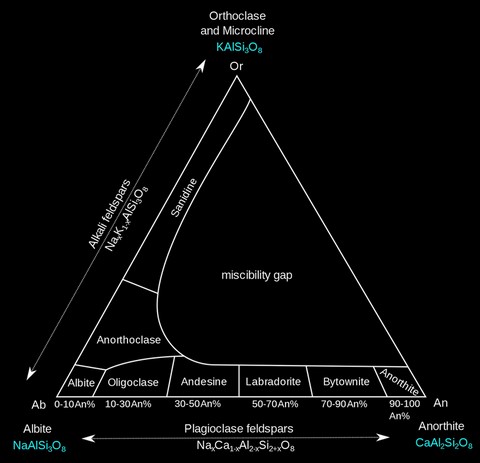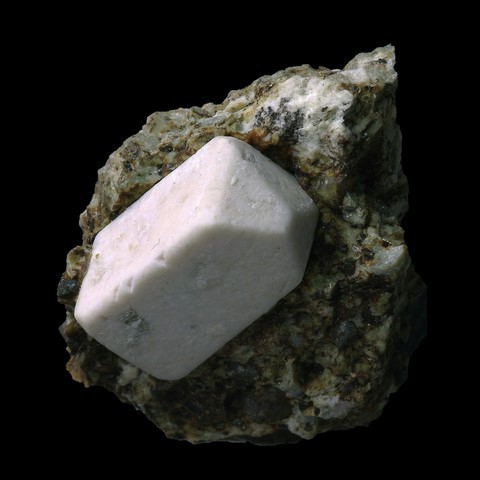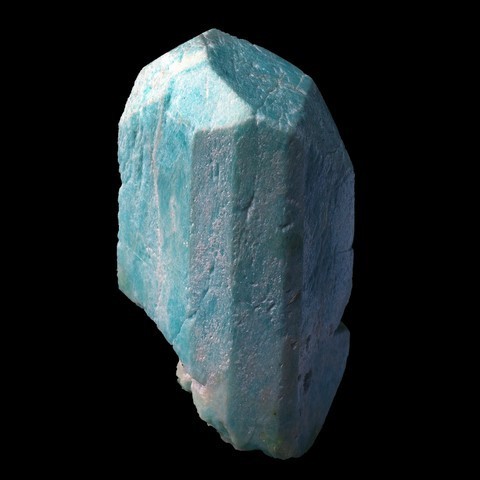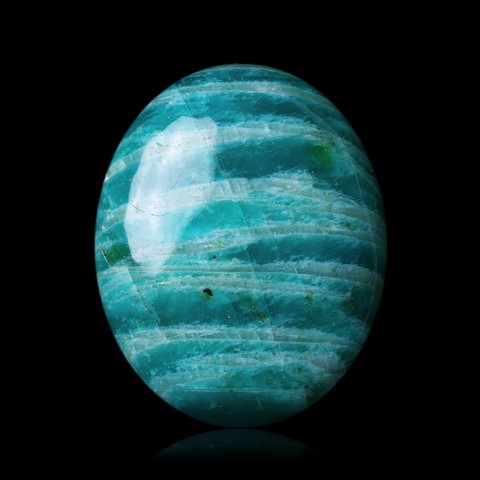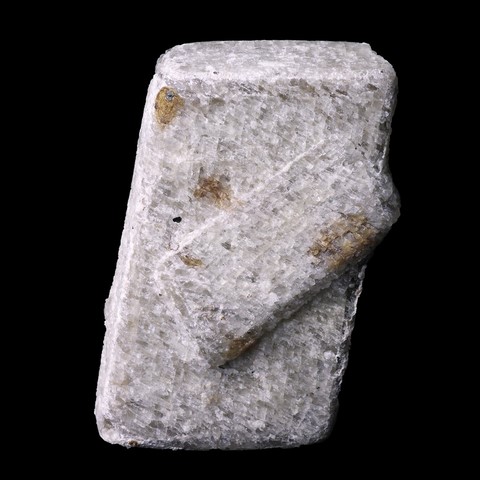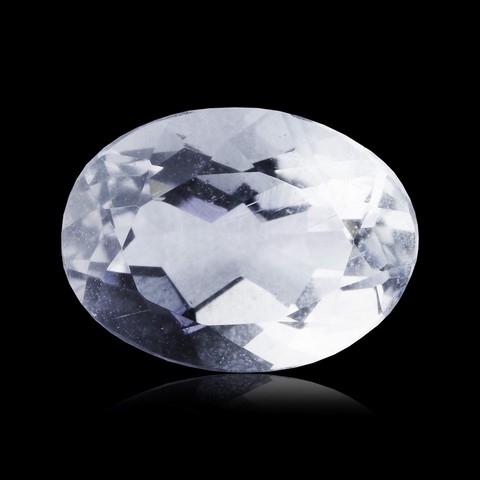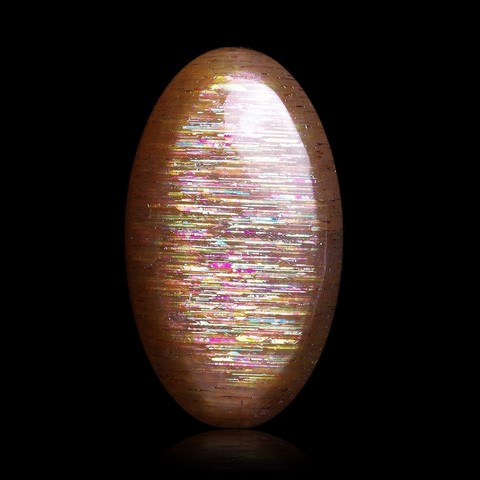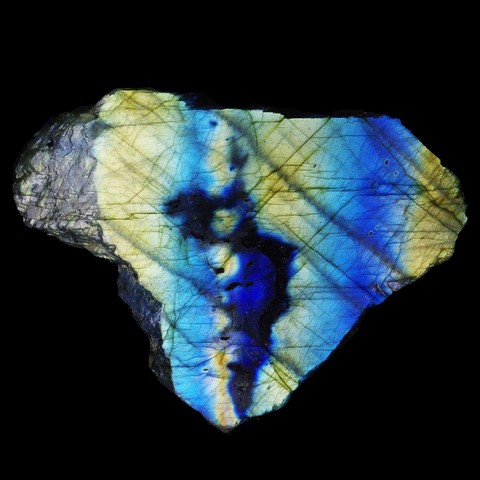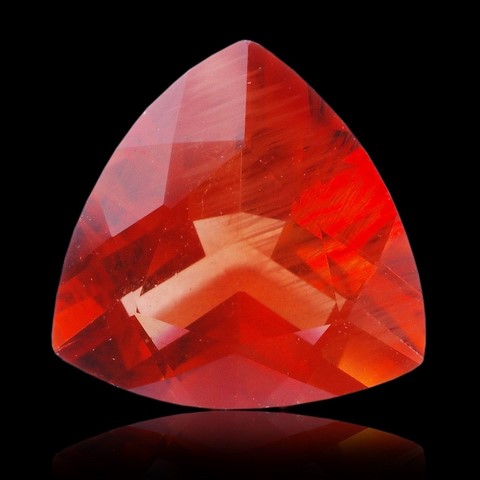 Feldspar - Encyclopedia
Feldspar - Encyclopedia
Class : Silicates
Subclass : Tectosilicates
Crystal System : Variable
Chemistry : XZ4O8
Rarity : Very common
Feldspars are the most abundant group of minerals in the Earth's crust, more than 55% of them. They are divided into two major groups : the alkaline feldspars (orthoclase, microcline, sanidine, anorthoclase) constituting a continuous series of a potassium pole at a sodium pole, and the calcosodic feldspars or plagioclases (albite, oligoclase, andesine, labradorite, bytownite and anorthite), also constituting a continuous series from a sodium pole to a calcium pole. There are other more rare feldspars such as celsian and hyalophane. Three origins are proposed for the term feldspar. "Feldtspat" comes from the Swedish feldt or fält and evokes the common presence of spath (feldspar) in fields plowed in granitic terrain. For others, this word comes from the German feld (field) and spat (crystal), because in decomposing the feldspar brings many enriching elements for the soil. Finally, some people think that this word comes from the German "fels" (rock).
Feldspars are essential minerals in almost all magmatic and metamorphic rocks ; they are less common in sedimentary rocks because they are easily altered in clay minerals. They are essential in the classification of magmatic rocks.
Alkaline feldspars :
Microcline and orthoclase are the alkaline feldspars common to plutonic rocks. Orthoclase appears in granites, granodiorites or syenites of medium depth, the microcline in pegmatites or in granites and syenites cooled slowly at great depth. The green amazonite is a variety of microcline, adular considered as a variety of orthoclase, can actually be also a microcline or sanidine... Sanidine is the alkali feldspar of volcanic rocks ; cooled quickly, this mineral has the most disordered structure of alkaline feldspars. Anorthoclase is an intermediate term between sanidine and high temperature albite.
Plagioclase feldspars :
Plagioclase feldspars offer a wide range of compositions but similar properties between sodium albite and calcium anorthite. They very often present polysynthetic twinning. This specificity makes it possible to easily recognize them with a polarizing microscope but also sometimes by magnifying glass, the twinning resulting in a fine and regular striation on the faces.
Plagioclase feldspars are very abundant and more widespread than potassic feldspars. They are mostly abundant in eruptive and metamorphic rocks, less in sedimentary rocks. The calcium terms crystallize at higher temperatures than the sodium terms, and the magmas formed early or at higher temperatures will mainly include calcium terms. The classification of magmatic rocks is largely based on the abundance and composition, calcium or sodium plagioclase.
Uses of feldspars :
Ornamentation and gemstones constitute a notable additional use of these feldspars. Some varieties of transparent yellow sanidines of Madagascar are cut in gemstones. The amazonite, a blue-green variety of microcline is widely used as a fine stone and ornamental, and, under the name "moonstone" with opalescent bluish highlights, the shimmering varieties of anorthoclase, adularia, oligoclase and sometimes sanidine is used as a fine stone.
Among the plagioclases, albite and oligoclase are sometimes used in the ceramics and porcelain industry. Both have occasional rows of gemstones. Some specimens of oligoclase have a use in jewelery, in addition to the "moonstone" already mentioned, the best known is the "sunstone", a transparent oligoclase with red, brown or yellow inclusions. Finally, the labradorite-rich rocks are used as ornamental stones and in the object carving, their blue, yellow, purple hues are highly apreciated.
Hardness : Variable
Density : Variable
Fracture : Uneven to conchoidal
Streak : White
TP : Translucent to transparent
IR : Variable
Birefringence : Variable
Optical character : Variable
Pleochroism : Variable
Fluorescence : Variable
Solubility : Hydrofluoric acid
Magnetism : None
Radioactivity : None

